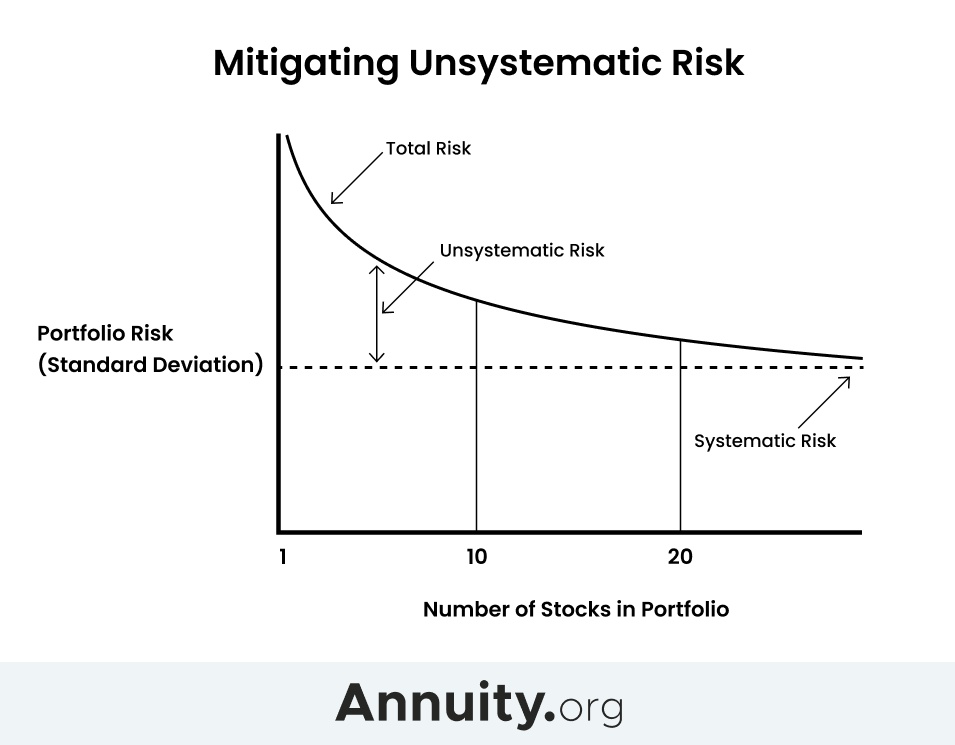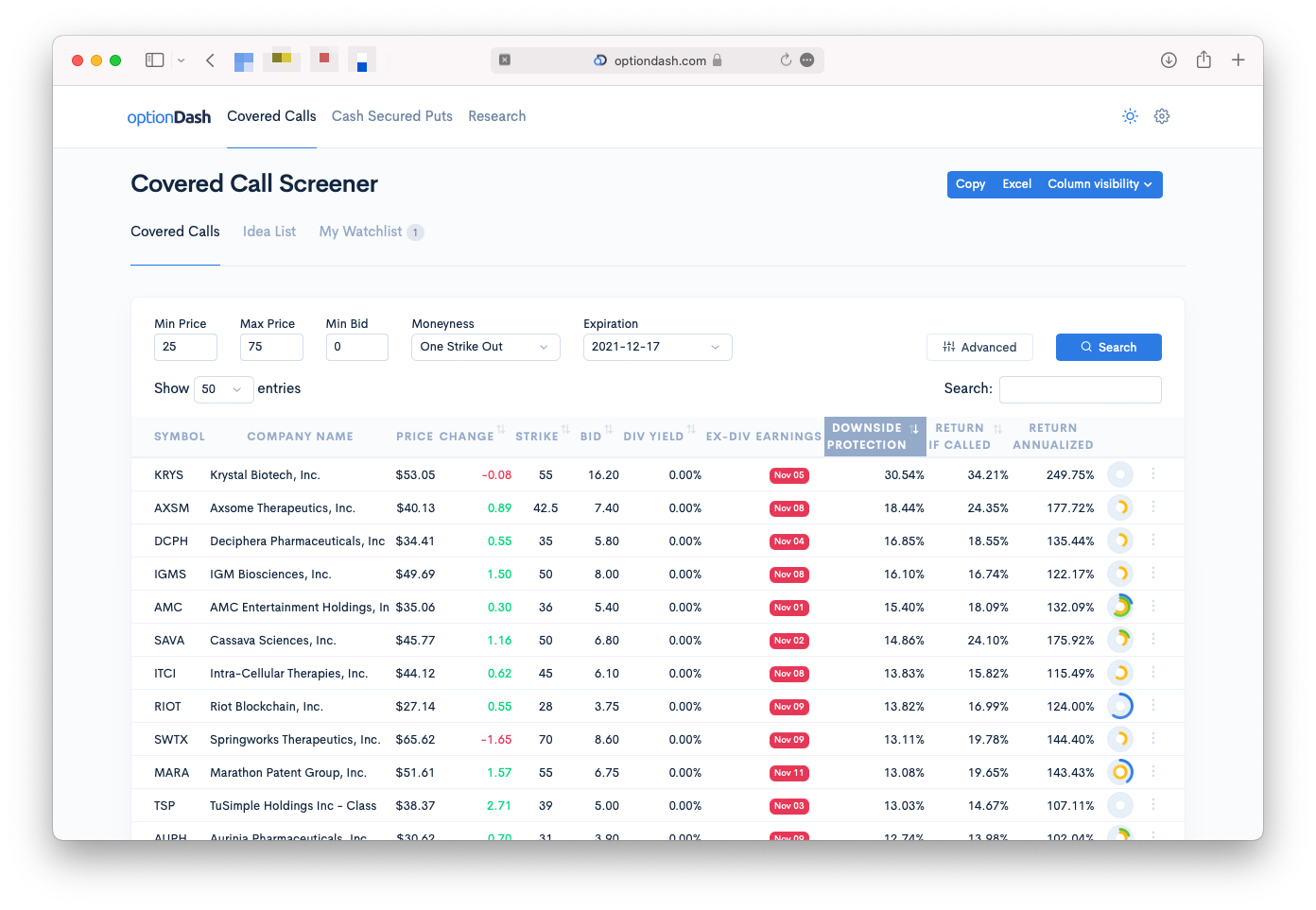How to Select the Best Stocks for Covered Calls and Minimize Risk
Jesse Anderson
Covered calls are a popular way to generate extra income from a long stock portfolio. Selecting the right stocks for covered calls is critical to minimizing risks and maximizing returns. And, that means diving into everything from the underlying stock’s fundamentals to the option’s Greeks. But don’t worry; it’s easy with the proper knowledge and tools.
In this short guide, we’ll discuss five factors when selecting the best stocks for covered calls. And we’ll also look at the tools you can use to streamline your research process and find opportunities.
Selecting the right stocks is critical to minimizing risks and maximizing returns with covered calls. Click To TweetStart with Fundamentals
Covered calls are “covered” because you must hold the underlying stock until the option expires. Your biggest risk is that the stock drops in value while holding it, which is true even if you just own the stock without a covered call. So, you want to be sure that any stocks you own are fundamentally sound and not overdue for a drop.
You may look at fundamental factors like:
- Earnings Growth
- Valuation Multiples
- Free Cash Flow
- Debt and Leverage
Of course, the importance of a company’s fundamentals depends on the holding period. If you only plan to hold a stock for a month until the call option expires, you don’t need to be as concerned with long-term debt sustainability or even valuation multiples. If you’re investing over the long haul, finding strong companies is essential.
Ensure Diversification
The most fundamentally sound company in the world could see a significant decline if there’s an industry-wide risk. For example, you might purchase a stable, undervalued oil company, but if the price of oil drops due to geopolitical conflict, it will likely head lower. Keep in mind that the same decline could boost consumer spending and help consumer discretionary stocks.
Diversification is the best way to protect against non-systemic risk.

By purchasing a diversified portfolio of 20+ stocks, you can minimize the risk of any one stock tanking your portfolio. Source: Annuity.org
When building a covered call portfolio, select companies from various industries to mitigate industry-specific risk factors. Using tools like Portfolio Visualizer or Macro Axis, you can also look at the specific correlation coefficients between stocks. You can also diversify across different asset classes outside your covered call portfolio.
Beware of Earnings & Other Events
There’s no better way to blow up a covered call position than an earnings surprise. When a company announces an earnings miss, it could quickly send your covered call position into the red. On the other hand, if they reveal a surprise, the odds of someone exercising your call option could move sharply higher, creating a different set of problems.
In addition to avoiding earnings season, tread carefully when holding covered call positions over ex-dividend dates. If your call option is in-the-money, the option buyer may exercise the option to take ownership of the stock in time to receive the Dividend. That said, capturing both the Dividend and the premium income can maximize your income.
Assess Risk & Return
Covered call investors typically fall into two categories: Those using covered calls to supplement income from their existing long stock portfolio or those buying specific stocks to maximize income from covered calls. If you fall into the second category, you will want to choose opportunities with the best risk-adjusted return potential.
There are three scenarios to consider:
- The stock price increases, and the option buyer exercises the call option. You can calculate your return in this scenario using the if-called return, which is equal to: (Call + Dividend) + (Strike – Stock Price) / Stock Price x (360 / Days to Expiration).
- The stock price remains the same. In this scenario, you can calculate your return by computing the static return, which equals: (Call + Dividend) / Stock Price x (360 / Days to Expiration).
- The stock price decreases. In this scenario, it helps to know your downside protection, which is how much stock price downside the option premium offsets (up to your breakeven point).

OptionDash provides an intuitive and easy-to-use screener. Source: OptionDash
OptionDash makes it easy to screen for covered call opportunities and sort them by annualized static return, if-called returns, or downside protection. You can also quickly assess a company’s fundamentals and see upcoming earnings and ex-dividend dates.
Dive Deeper with Greeks
Many options traders use the so-called “Greeks” to measure various factors affecting the price of an option contract. In short, these figures calculate how factors like time and volatility impact an option’s price, letting you dive deeper into analyzing risk-adjusted returns.
The five most popular Greeks include:
- Delta measures the sensitivity of an option’s price changes relative to the underlying asset’s price.
- Gamma measures the delta changes relative to the underlying asset’s price.
- Vega measures an option’s price sensitivity to the underlying asset’s volatility.
- Theta measures the sensitivity of an option’s price to its time to maturity.
- Rho measures the sensitivity of an option’s price to interest rates.
Most covered call investors look at the theta (how much you earn) and the vega (how much risk you take). Generally, options with an implied volatility of more than 50% with a theta-to-vega ratio of 0.25 or higher are excellent covered call candidates. The higher the theta-to-vega ratio, the better the risk-reward outlay for an option seller.
The Bottom Line
Covered calls are an excellent way to generate income from a long stock portfolio. They can also be an income-generating strategy of their own (also known as buy-write). But selecting the right stocks is critical to minimizing risks and maximizing returns. And keeping the tips we’ve discussed in mind can help you tilt the odds in your favor.
If you’re new to covered calls, Snider Advisors’ free e-course can help you understand the basics. The Snider Investment Method also provides a helpful framework for selecting stocks and managing covered call positions over time. Or, if you prefer a DIY approach, OptionDash can help you screen for covered call or secured put opportunities.
Posted in Covered Call Screener |